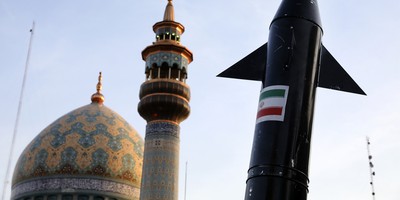Where can the new Congress start cutting spending? Here's one obvious answer: high-speed rail. The Obama administration is sending billions of stimulus dollars around the country for rail projects that make no sense and that, if they are ever built, will be a drag on taxpayers indefinitely.
When incoming Govs. Scott Walker of Wisconsin and John Kasich of Ohio cancelled high-speed rail projects, Transportation Secretary Ray LaHood refused to let them spend the dollars on other forms of transportation and sent the funds instead to California and other states.
Walker argued that Wisconsin didn't need $810 billion for a 78-mile line between Madison and Milwaukee because there's already a transportation artery -- Interstate 94 -- that enables people to get from one city to the other in a little more than an hour (I once drove that route to have dinner in Milwaukee).
Kasich's rationale? "They tried to give us $400 million to build a high-speed train that goes 39 miles an hour." Train boosters countered that its top speed was 79 miles per hour -- about the same as many drivers on Interstate 71.
High-speed rail may sound like a good idea. It works, and reportedly even makes a profit, in Japan and France. If they can do it, why can't we?
A look at some proposed projects gives the answer. Take the $2.7 billion, 84-mile line connecting Orlando and Tampa that incoming Florida Gov. Rick Scott is mulling over.
It would connect two highly decentralized metro areas that are already connected by Interstate 4. Urban scholar Wendell Cox, writing for the Reason Foundation, found that just about any door-to-door trip between the two metro areas would actually take longer by train than by auto -- and would cost more. Why would any business traveler take the train?
Recommended
As for tourists headed for Orlando's theme parks, there is already a convenient rental car operation, with some of the nation's lowest rates, at the Orlando airport. Why would parents get on a train, pay a separate fare for each kid and then rent a car at the station when you could more easily get one at the airport?
As Cox points out, cost estimates for the Florida train seem underestimated and the ridership estimates seem wildly inflated. If he's even partially right, Florida taxpayers will be paying billions for this white elephant over the years.
Other projects seem just as iffy. California is spending $4.3 billion on a 65-mile stretch of track between Corcoran and Borden in the Central Valley, which is supposed to be part of an 800-mile network connecting San Diego and Sacramento. Its projected cost was $32 billion in 2008 and $42 billion in 2009, suggesting a certain lack of precision.
Or consider the $1.1 billion track improvement on the Chicago-St. Louis line in Illinois. It would reduce travel time between the cities by 48 minutes, but the trip would still take over four and a half hours at an average speed of 62 miles per hour.
None of these high-speed projects are really high-speed. Japan has bullet trains that average 171 miles per hour, France's TGV averages 149 miles per hour. At such speeds you can travel faster door-to-door by train than by plane over distances up to 500 miles.
In contrast, Amtrak's Acela from Baltimore to Washington averages 84 miles per hour and the Orlando-Tampa train would average 101 miles per hour. That makes the train uncompetitive with planes on trips more than 300 miles.
Now take a look at your map and see how many major metro areas with densely concentrated central business districts and large numbers of business travelers are within 300 miles of each other.
The answer is not very many outside of the Northeast Corridor between Washington and Boston. Our geography is different from France's or Japan's.
Moreover, to achieve the speed of French and Japanese high-speed rail, you need dedicated track so you don't have to slow down for freight trains. To get dedicated track, you need a central government that is willing and able to ignore environmental protests and not-in-my-backyard activists. Japan and France have such governments. We don't.
So we are spending billions on high-speed rail that isn't really high speed, that will serve largely affluent business travelers and that will need taxpayer subsidies forever. This should be a no-brainer for a Congress bent on cutting spending.

























Join the conversation as a VIP Member